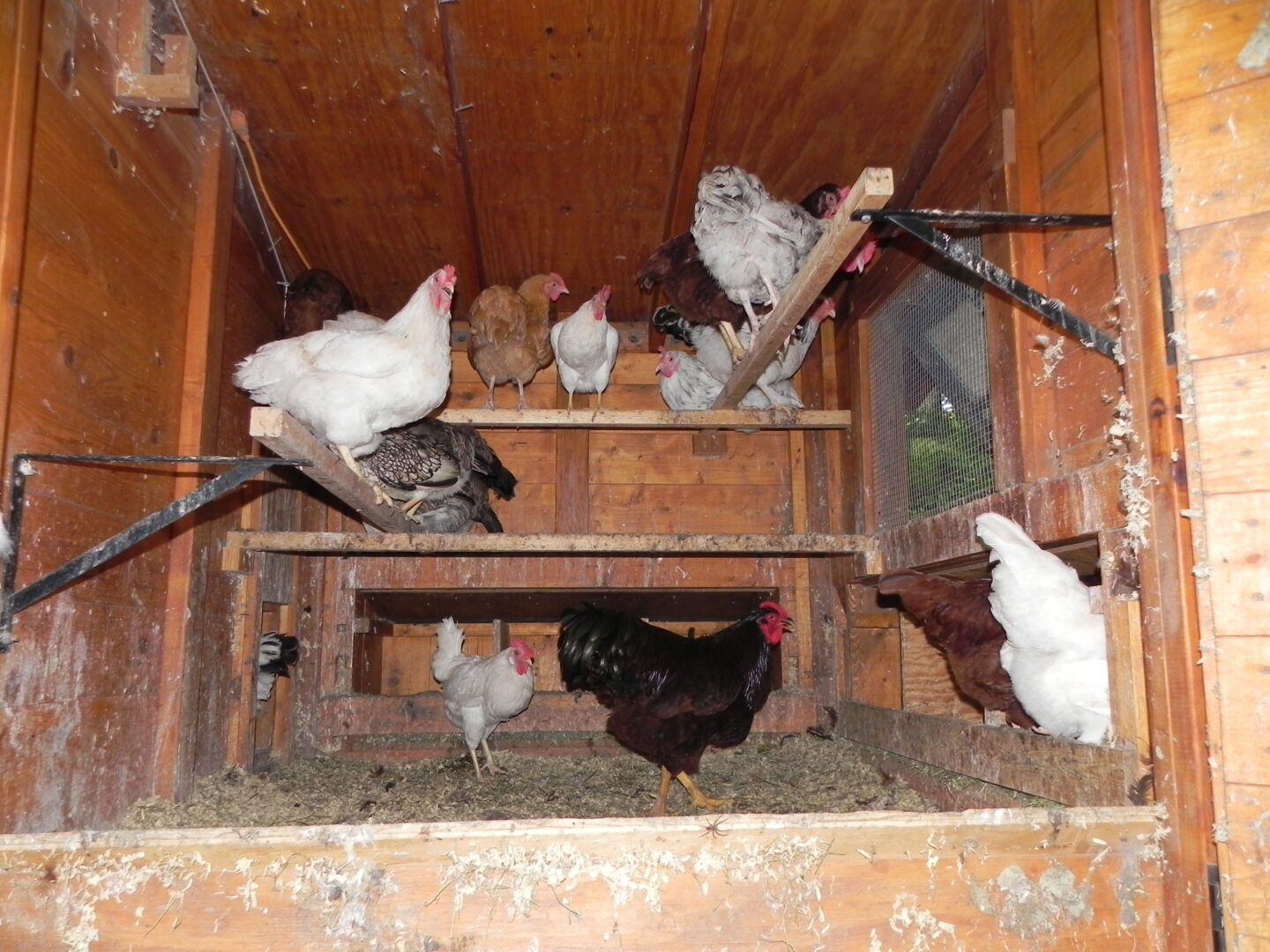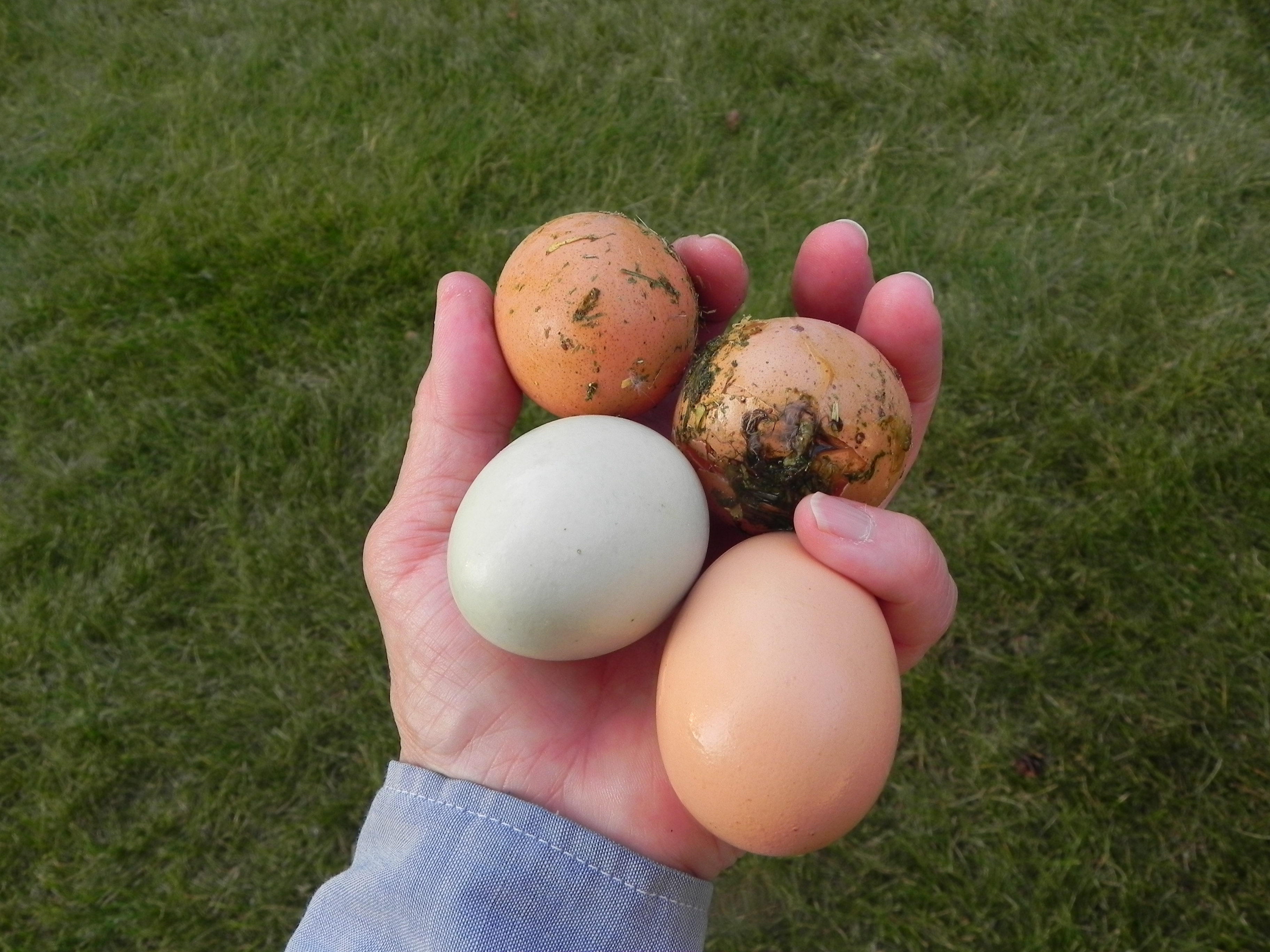Say No to Crowded Coops!

If hens are bickering and look a little rough, there’s nary a blade of grass in the run, and the eggs are dirty and not too plentiful the problem may be crowding. Chicken rearing books, blogs, and magazine articles usually recommend providing at least four square feet of coop floor space per adult bird. City ordinances also commonly require four square foot space per bird.
Newcomers to chicken raising buy or build a backyard coop and heed the advice and ordinance. But a tempting dilemma often arises. There are so many interesting chicken breeds that it’s hard to limit a flock to six. It’s hard to resist adding a few exotic breeds to the chick order. Then a friend calls to say she needs to get rid of her chickens. So, a couple of more birds go into an increasingly crowded coop.
Aside from the legal issue of exceeding the number of hens allowed by the town’s ordinance, crowding chickens is likely to create a dirty, smelly coop filled with stressed hens that may be aggressive, unhealthy, and unkempt.
Crowding Causes Social Problems
In some ways chickens and people are alike. Both need personal space, an ability to cleanse themselves, exercise, and mental stimulation. Cram many people into small unsanitary spaces and expect spats and smell to increase while productivity declines. The same happens with chickens. Crowd them together and expect these problems:
- Bickering that leads to downright aggressive behavior.
- Broken and dirty eggs. When too many hens use too few nests they break eggs.

The contents of broken eggs soil the unbroken ones and encourage chickens to begin the nasty habit of eating eggs. - Dirty and disheveled looking birds. Crowded chickens are dirty, have broken feathers, and sometimes even have sores resulting from other birds picking at them.
Sanitation and Disease
Too many chickens crowded together are a recipe for disease and dirt. Eight birds in 32 square feet produce twice the manure as four birds in the same space. Crowded birds need their coop cleaned more often than their owners are likely to do it. They frequently tip over water buckets, resulting in wet smelly litter in the coop. Because crowded hens are more likely to quarrel and pick at each other, open sores and broken feathers result that can led to infection. Disease carrying microbes thrive in crammed dirty coops.
Four square feet of floor space per bird is a bare minimum for a healthy flock. Give the birds a little more breathing room and flock stress will decline. Hens will be calm, healthy, and clean.
It’s tempting to include the size of the outdoor run when calculating the square feet per bird. Extra space outside gives hens a chance to enjoy fresh air and exercise while discovering delicious insects, worms, and plants to eat. Unfortunately they won’t go out when snow is on the ground, it’s raining hard, or predators lurk nearby. Consider the run bonus space and don’t count it when determining how many birds can be comfortably housed in a coop.
Chickens spend much time dust bathing and preening to keep clean. Crowded hutches and muddy runs make grooming impossible. Giving birds plenty of space with clean litter, fresh water, nutritious food, and a grassy run reduces bird stress while enhancing cleanliness and productivity.
If it’s important to keep many hens in limited space there is an alternative. Bantams are fascinating miniature chickens available in dozens of breeds. Because they are much smaller than standard breeds more can be housed in a small coop and will be happy with a couple of square feet per bird. Some bantam breeds are prolific layers of tiny but delicious eggs.
No matter your coop design, style or architecture, just remember that clean contented birds are fun to be around. Stressed dirty ones aren’t.
